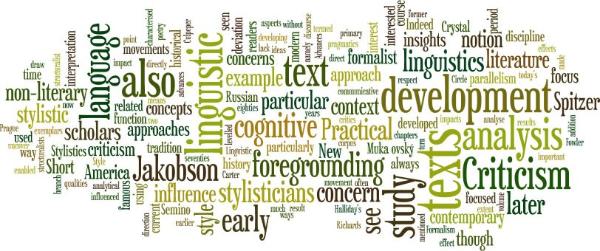 |
Facts
Duration: 1 semester
Period: Fall (7) Semester
Credits: 4 ECTS
Contact Hours: 54
Self-study: 90
Hours: 144
|
Main Objectives
- to study the basic aspects of Stylistics as a science;
- to study methods of investigation applied in Stylistics;
- to study stylistic devices and expressive means and their function;
- to study functional styles and their peculiarities in English.
Learning Outcomes
Formation of competence:
а) intercultural:
- the ability to develop cultural and professional level independently and to master new methods of research;
- the ability to get and use new knowledge independently.
b) professional:
- the ability to use the system of linguistic knowledge including the functioning of the language in the professional sphere;
- the ability to operate under the theoretical and applied linguistics, as well as the theory of crosscultural communication to solve the professional problems;
- ability to conduct independent research according to the developed programme.
Professor
Irina G. Razina, Associate Professor
Course annotation
|
Course unit code |
Specialization 45.03.02 Linguistics |
||||||
|
Course unit title |
Stylistics of the English Language |
||||||
|
Name(s), surname(s) and title of lecturer(s) |
Irina G. Razina, Associate Professor |
||||||
|
Level of course |
Bachelor |
||||||
|
Semester |
7 |
||||||
|
ECTS credits |
4 |
||||||
|
Working hours |
Contact hours |
54 |
|||||
|
lectures |
34 |
||||||
|
seminars |
20 |
||||||
|
practical classes |
|||||||
|
laboratory classes |
|||||||
|
consultations |
|||||||
|
Independent work |
90 |
||||||
Total |
144 |
||||||
|
Work placement |
none |
||||||
|
Language of instruction |
English |
||||||
|
Prerequisites |
Linguistics, Phonetics, Grammar, Lexicology, Literature |
||||||
|
Objectives of the course |
Learning outcomes |
A student’s assessments methods |
|||||
|
aims: - to study the basic aspects of Stylistics as a science; - to study methods of investigation applied in Stylistics; - to study stylistic devices and expressive means and their function; - to study functional styles and their peculiarities in English.
|
Formation of competence: а)intercultural: - the ability to develop cultural and professional level independently and to master new methods of research; - the ability to get and use new knowledge independently. b) professional: - the ability to use the system of linguistic knowledge including the functioning of the language in the professional sphere; - the ability to operate under the theoretical and applied linguistics, as well as the theory of crosscultural communication to solve the professional problems; - ability to conduct independent research according to the developed programme. |
Tests, presentations and exam. |
|||||
|
Teaching methods |
Lectures, seminars, reading of literature |
||||||
|
Course unit content |
Title |
Lecturers (hours) |
Self-study (hours) |
||||
|
Stylistics as a science |
4 |
4 |
|||||
|
Stylistic stratification of the vocabulary in English |
2 |
8 |
|||||
|
Methods of investigation in Stylistics |
4 |
8 |
|||||
|
Lexical stylistic devices and expressive means |
10 |
14 |
|||||
|
Phonetic and graphic stylistic devices and expressive means |
8 |
12 |
|||||
|
Syntactic stylistic devices and expressive means |
10 |
14 |
|||||
|
Functional styles of the English language |
10 |
16 |
|||||
|
Methods of text interpretation |
6 |
14 |
|||||
|
54 |
90 |
||||||
|
Assessment requirements |
Student’s skills in this subject will be evaluated by means of written tests and final examination. |
||||||
|
Assessment criteria |
The assessment of the presented works is carried out by the following criteria: – compliance of the contents to a subject; – existence of logical communication of stated information; – compliance of registration to requirements; – accuracy and literacy of a statement; – work is handed over in time. |
||||||
|
The composition of final accumulative mark |
Final accumulative mark consists of: 4 tests –20 %, presentation – 10%, exam – 70 % |
||||||
|
Course outline arranged by |
Irina G. Razina |
||||||
.png)